RBA Marks Down Forecast of Croatia's 2022 GDP Growth to 4%
7 March 2022 - Raiffeisenbank Austria (RBA) analysts on Monday revised down their estimate of Croatia's economic growth in 2022 from 4.4% to 4%, underscoring uncertainty and negative risks, particularly regarding investments.
The analysts said that in light of the war in Ukraine and growing uncertainty, their forecast for the euro area economy has been marked down by 0.7 percentage points to 3.3%.
"The expected trends will have a negative, albeit a limited impact on Croatia's GDP. In the scenario that excludes the possibility of the war spreading to other countries of the EU and/or Western Balkans and implies, at least for the time being, that the tourism season will be successful, the forecast for the real annual GDP growth rate for 2002 has been revised from 4.4% to 4%," the analysts said.
The analysts however remain cautious, underscoring uncertainty and negative risks, particularly with regard to investments.
Inflation in 2022 at 4.9%
They also see a more significant risk in the spilling over of the global increase in energy and food prices, and have therefore revised up their inflation forecast.
RBA estimates that this year's inflation rate in Croatia will be 4.9% whereas previously it was forecast at 3.6%.
Data from the Croatian Bureau of Statistics (DZS) indicated an increase in inflation of 5.7% in January this year compared to January 2021, which is the highest increase since October 2008.
"We expect that this year will see stronger inflationary pressure, directly on food prices, and that the impact of price growth on producers will also affect consumers, which will negatively impact available income. In such circumstances we cannot rule out the possibility of additional fiscal support," the analysts said.
Adris Group Posts Net Profit of HRK 403M
28 February, 2022 - Adris Group generated a net profit of HRK 403 million in 2021, up from 44.6 million in 2020, with revenues growing by 20% to HRK 5.73 billion, the tourism and insurance group reported on Monday.
Sales revenue increased by 23% from 2020 to HRK 5.3 billion, while earnings before interest, taxes, depreciation and amortisation (EBITDA) reached HRK 1.02 billion, down 5% from the pre-pandemic 2019.
Adris said that all companies operating within the group had undertaken business transformation programmes, including digitalisation, to increase their operational excellence and gain a competitive edge.
Strategically, the present crisis has confirmed that Adris has a well-balanced portfolio. The HRK 400 million of its investment in 2021 and preparations for a number of new projects show that the continuity of development has been maintained even in times of high business uncertainty, the group said.
The group's tourism segment posted a sales revenue of HRK 1.36 billion, accounting for 78% of the revenue generated in the record-breaking 2019.
Croatia's leading insurer Croatia Osiguranje earned a consolidated net profit of HRK 363 million, an increase of 11%. Its total gross written premium increased by 5% to HRK 2.8 billion, while consolidated gross written premium, including regional branch offices, amounted to HRK 3.4 billion, increasing by 6% from 2020.
Cromaris, specialised in production and processing of high quality Mediterranean fish, saw a 14% rise in EBIDTA which reached HRK 67 million, and its net profit skyrocketed 40% to HRK 13 million.
Business: For more, check out our business section.
ZSE Indices Go Up Amid Weak Turnover
ZAGREB, 31 January 2022 - The main Zagreb Stock Exchange (ZSE) indices went up slightly amid weak turnover, with the Crobex increasing by 0.33% to 2,132.61 points and the Crobex10 by 0.40% to 1,301.52 points.
Regular turnover was HRK 3.9 million, about HRK 700,000 less than on Friday.
No stock crossed the million kuna mark in trading.
Končar generated the highest turnover, of HRK 552,100, closing at HRK 900 per share, up 1.69%.
Thirty-six stocks traded today, with 11 gaining in price and 11 losing, while 14 were stable.
(€1 = HRK 7.528487)
For more, check out our business section.
HNB: Household Deposits Increase by 9.2%, Loans by 4.5%
ZAGREB, 31 January 2022 - In 2021, household loans went up by 4.5% to HRK 141.5 billion on the year on the back of a strong rise in housing loans, while household deposits went up by 9.2% to HRK 246.1 billion, the Croatian National Bank (HNB) said on Monday.
At the end of 2021, monetary institutions' lending to domestic sectors, except the central government, totalled HRK 245.8 billion, up 3.9% on the year.
Loans totalled HRK 238.9 billion, of which HRK 141.5 billion were household loans, HRK 86 billion were corporate loans, and HRK 11.4 billion were loans to other domestic sectors.
Housing loans totalled HRK 67.8 billion, up 9.2% from the end of 2020. Non-purpose cash loans went up by 2.3% to HRK 53 billion.
Loans to non-financial companies went up by 1%, as against a 6% increase at the end of 2020. Their bonds went up by 58.7%. Corporate loans went up by 2.3%, as against a 2.3% increase at the end of 2020.
Month on month, monetary institutions' lending in December 2021 was up by HRK 2.8 billion (+1.1%). Loans went up by HRK 1.7 billion (+0.7%). Loans to non-financial companies were up by HRK 1.4 billion (+1.6) and those to other domestic sectors by HRK 400 million (+3.6%).
Household loans decreased by HRK 100 million month on month, as did non-purpose cash loans, while housing loans increased by HRK 300 million.
At the end of 2021, deposits reached HRK 365.8 billion, up by 35.5 billion on the year (+10.8%). Money on transaction accounts increased by HRK 13.6 billion (+21%).
(€1 = HRK 7.5)
For more, check out our dedicated business section.
PM Says Satisfied with Fitch Rating, Gov't Working on Creating Conditions for Growth
ZAGREB, 22 May 2021 - PM Andrej Plenković on Saturday expressed satisfaction with Fitch rating agency's having maintained Croatia's rating at BBB- with a stable outlook, saying his government was working to create conditions for economic growth so that this and next year its growth rate could be among the highest in the EU.
Fitch Ratings on Friday affirmed Croatia's rating at 'BBB-', with a stable outlook, saying that pressure on state finance linked to the pandemic should be neutralised by economic recovery on the back of tourism and EU support.
"We are very happy. The... rating confirms what we have been doing in the past 15 months," Plenković told reporters while visiting Crikvenica and Rijeka in Primorje-Gorski Kotar County, where he met with candidates of the local branches of his HDZ party ahead of the second round of local elections set for 30 May.
Plenković stressed that Fitch had sent a message that Croatia had maintained political stability.
"We had parliamentary elections last year, we quickly formed the government, continued working, fought against the pandemic while at the same time keeping the stability of public finances," he said, adding that owing to public finance stability it was possible to secure funding for healthcare, wages, pensions, and job-keeping support.
"The coronavirus crisis has cost us so far HRK 32 billion, the damage caused by the earthquakes in Banovina and Zagreb amounts to HRK 125 billion. But despite that, we have managed to make sure everyone continues receiving their wages, we have secured job-keeping support in the amount of HRK 10.5 billion, 680,000 workers have received wages owing to the government's political decision to compensate employers for their workers' wages, and we have introduced measures for shorter working hours, various forms of support for liquidity in numerous sectors, and the coverage of fixed costs," he said.
"With a timely entry into the domestic capital market and access to international sources of financing, clever agreements with the Croatian National Bank and the European Central Bank, we have managed to maintain our reputation with credit agencies and all international institutions," he said, adding that apart from functioning normally and heading towards the euro area, Croatia was also in the European Exchange Rate Mechanism II.
"A budget revision will be on the agenda soon, in early June, and we will try to maintain, this year as well, the framework that will make it possible for our growth in 2021 and particularly in 2022 to be among the highest in the EU," said Plenković.
For more about business in Croatia, follow TCN's dedicated page.
He put this in the context of vaccination against COVID-19, calling on Croatians to get vaccinated.
Plenković believes that as regards reputation, Croatia has a very stable position and that with vaccination it is also creating conditions for an excellent tourist season, which, he says, together with the green digital certificate and the pandemic subsiding, will enable economic growth.
"Croatia is on the right track and I am encouraged by the assessment of those who have an unbiased and very precise judgment of our performance in the current crisis, it is very encouraging in my opinion," said Plenković.
In its latest rating, Fitch has upgraded the projection for Croatia's economic growth in 2021 from 3.8% to 5.5%.
Fitch forecasts GDP growth to accelerate to 6.1% in 2022 before averaging 4% in 2023-25, driven largely by investment and notes that Croatia will receive around €6.3 billion in grants from the Recovery and Resilience Facility, in addition to €1 billion from the EU Solidarity Fund for earthquake reconstruction and €12.6 billion in the 2021-27 Multi-Annual Funding Facility.
Fitch Affirms Croatia at 'BBB-', Outlook Stable
ZAGREB, 22 May 2021 - Fitch Ratings on Friday affirmed Croatia's rating at 'BBB-', with a stable outlook, saying that pressure on state finance linked to the pandemic should be neutralised by economic recovery on the back of tourism and EU support.
The 'BBB-' rating balances strong structural features, the agency says, singling out better indicators of human development and governance in comparison with countries with a similar rating and higher GDP per capita.
The rating is restricted by a high public debt and periods of weak economic growth, in part due to the slow adoption of structural reforms.
The stable outlook "weighs large short-term downside risks related to pandemic developments against stronger medium-term growth prospects linked to substantial EU fund support and our fiscal consolidation and debt reduction baseline that is underpinned by the authorities' commitment to fulfilling convergence criteria under the Exchange Rate Mechanism (ERMII)."
"Fitch expects the economy to expand by 5.5% in 2021, from a combination of base effects (growth was stronger than expected in 2H20), the resilience of sectors such as construction and goods exports, and a gradual recovery in consumption," the agency says.
"Our forecasts rest on an improved tourism sector outlook (at around two-thirds of 2019 levels), assuming a pick-up in summer tourism as the health crisis in Europe continues to abate. However, renewed travel restrictions due to the still uncertain evolution of the pandemic, including the spread of new variants, cannot be discounted."
European support
Fitch expects the economy to grow this year, "even if tourism levels remained at 2020 levels (50% of 2019), but the weaker recovery could increase the risk of longer-term scarring and put pressure on public and external finances."
Fitch forecasts GDP growth to accelerate to 6.1% in 2022 before averaging 4% in 2023-25, driven largely by investment and notes that Croatia will receive around €6.3 billion in grants from the Recovery and Resilience Facility (RRF), in addition to €1 billion from the EU Solidarity Fund for earthquake reconstruction and €12.6 billion in the 2021-27 Multi-Annual Funding Facility.
Work force problem
According to those projections, Croatia will likely reach pre-crisis output in early 2022, "limiting the risks of labour market hysteresis and corporate sector bankruptcies."
Rapid labour tightening in sectors such as construction could delay some of the investment momentum, as could the need to pass a large number of reforms, in a short timeframe in order to get RRF fund disbursement.
"Croatia's absorption capacity lags the EU average and the sheer size of funds accentuates the implementation challenges."
"If the authorities are successful at adopting long-standing reforms, this could mitigate major growth challenges such as adverse demographics. According to the EU Commission, the working age population could contract by 26% by 2050."
Deficit forecast raised
Fitch raised the public deficit forecast from 3.5 to 4% of GDP in 2021 and forecasts a fall to 3% in 2022, up by 0.8 percentage points from the forecast made last December.
"The authorities put in place relatively generous and effective pandemic support measures that are gradually being wound down, with very limited direct budget costs expected beyond 2Q21."
That will help bring public spending/GDP down from a record 55.4% of GDP in 2020, while revenue should benefit from strong nominal growth, but recovery in certain segments could be jeopardised if tourism activity disappoints.
Eurozone entry in 2024
Public debt/GDP should fall to 82.7% of GDP in 2022 from 88.7% in 2020, Fitch said, reducing the forecast from December by 2.8 percentage points.
Croatia benefits from favourable financing conditions and deposits, reducing liquidity pressures.
"Over 75% of public debt is foreign currency-denominated (almost all in euros), but there are few concerns about exchange rate stability and this long-standing vulnerability will dissipate once Croatia joins the eurozone."
The authorities continue to target euro adoption by early 2023, but the biggest challenge remains fulfilling the public finance convergence criteria targets, as the government deficit and debt reduction strategy could face challenges in the near term if macroeconomic conditions do not improve as expected.
Fitch maintains its forecast that Croatia should enter the eurozone in 2024.
Consolidation
The agency says that it could upgrade Croatia's rating if near-term macroeconomic risks dissipate and if criteria are met and eurozone accession goes as planned. A stable reduction of the public debt and budget deficit through budget consolidation would also have a favourable effect.
The rating could be downgraded in case of failure to reduce general government debt over the medium term, "for example due to a more pronounced and longer period of fiscal loosening and economic contraction," as well as in case of deterioration in macroeconomic prospects, for example through a setback to the tourism sector.
For more about business in Croatia, follow TCN's dedicated page.
Croatia Agriculture and Food Exports Jump in 2020, Imports Fall
December 19, 2020 – A surprising success story in a difficult year as Croatia agriculture and food exports jump in 2020, while imports of the same have fallen
Good news from any place is welcome in this most difficult of years. According to provisional data from the country's Central Bureau of Statistics, the total value of Croatia agriculture and food exports in the period from January to September 2020 amounted to 1.7 billion Euros, an increase of 5 percent from the same period in 2019. Within the same period, the value of agricultural and food imports into Croatia was 2.5 billion Euros, a decline of 7.3 percent from last year.
The success of Croatia agriculture and food exports in the period means that the country's trade deficit has decreased by huge 26.6 percent compared to the same period last year. With this year's findings taken into account, the trade deficit now stands at 758.8 million Euros. © Romulić & Stojčić
© Romulić & Stojčić
Croatia agriculture and food exports covered 69 percent of total imports this year, an increase of 8.11 percent. A total of 15.86 percent of all exports from the country come from the Croatia agriculture and food exports sector.
The most important item of production within the sector is corn, which accounts for 5.4 percent of all Croatia agriculture and food exports.
From January to September 2020, the most significant products in exports were: cereals (205.4 million Euros – a growth of a huge 62.6 million Euros); various food products (168.1 million Euros – including manufactured/processed foods like sauces, soups, ice cream, sugar products); fish and other seafood (a huge 147.4 million Euros – showing a growth of 14.5 million Euros); cereals, flour, starch or milk products; confectionery products, including chocolate (135.9 million Euros – a growth of 13.8 million Euros), and tobacco-related products (122.6 million Euros). TCN recently took a closer look at the successful and well-established Croatian chocolate industry
Other successes within 2020 Croatia agriculture and food exports were live animals, with an increase of 10.1 million Euros, and the residue and waste of the food industry, which is exported to go into prepared animal foods. The latter saw an increase of 8.6 million Euros.
So far this year, Italy was one of the most important destinations for Croatia agriculture and food exports. Their total consumption of Croatia agriculture and food exports was 300.8 million Euros, which amounts to 17.76 percent of Croatia's exports in the sector. Croatia agriculture and food exports to Italy increased by 21.9 percent this year, while imports from Italy to Croatia in the same period was 263 million Euros, a decrease of 16.6 percent on 2019. This creates a surplus of 37.6 million Euros.
The most important Croatia agriculture and food exports to Italy are maize, wheat and soybeans, tobacco-related products, sea bass (brancin) and bream (orada).
For the last five years, Croatia agriculture and food exports top consumer has been Germany. For the past seven years, Germany has also been the country from which Croatia has imported the most.
Faculty of Economics University of Zagreb Celebrates 100 Years
ZAGREB December 5, 2020 – With over 9000 students currently enrolled, the Faculty of Economics University of Zagreb is the largest faculty in Croatia. In 2020, this internationally renowned institution celebrates its 100th birthday, so TCN decided to take a closer look.
Every other student you meet in Croatia seems to study economy. It makes you wonder where they all go to after their studies are complete. Are there really so many positions for economists in Croatia?
In 2020, the Faculty of Economics University of Zagreb celebrates its 100th birthday. The long list of its famous former students gives a clue to where all the Croatian economists go – the tourism sector, diplomacy and international relations, business, politics and government.
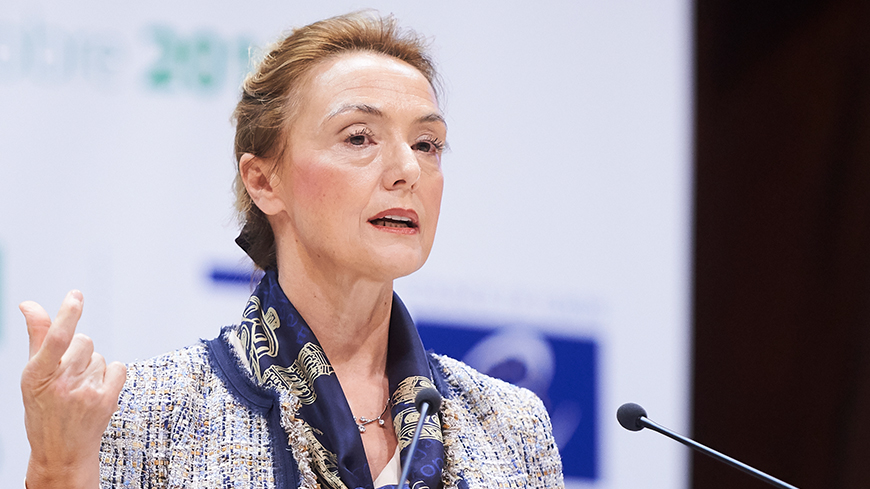 Marija Pejčinović Burić, a graduate of the Faculty of Economics of the University of Zagreb and the current Secretary General of the Council of Europe. After graduating, like Savka Dabčević-Kučar, she became o doctor of economics and before taking her current position served as Croatia's Deputy Prime Minister and Minister of Foreign and European Affairs © Council of Europe
Marija Pejčinović Burić, a graduate of the Faculty of Economics of the University of Zagreb and the current Secretary General of the Council of Europe. After graduating, like Savka Dabčević-Kučar, she became o doctor of economics and before taking her current position served as Croatia's Deputy Prime Minister and Minister of Foreign and European Affairs © Council of Europe
Graduates of the Faculty of Economics University of Zagreb have served as mayors of Zagreb and Split, Deputy Prime Minister of Croatia, Minister of Finance, Minister of the Economy, Secretary-General of the Council of Europe, Governers of the Croatian National Bank, Vice-President of the UN World Food Council, President of the Croatian Football Association, Minister of Environmental and Nature Protection, special advisors to the President of Croatia and countless university professors, including several former rectors of the University of Zagreb. Within its graduate professors, it has produced no less than 19 full members of the prestigious Croatian Academy of Sciences and Arts, more than any other single institution in the country.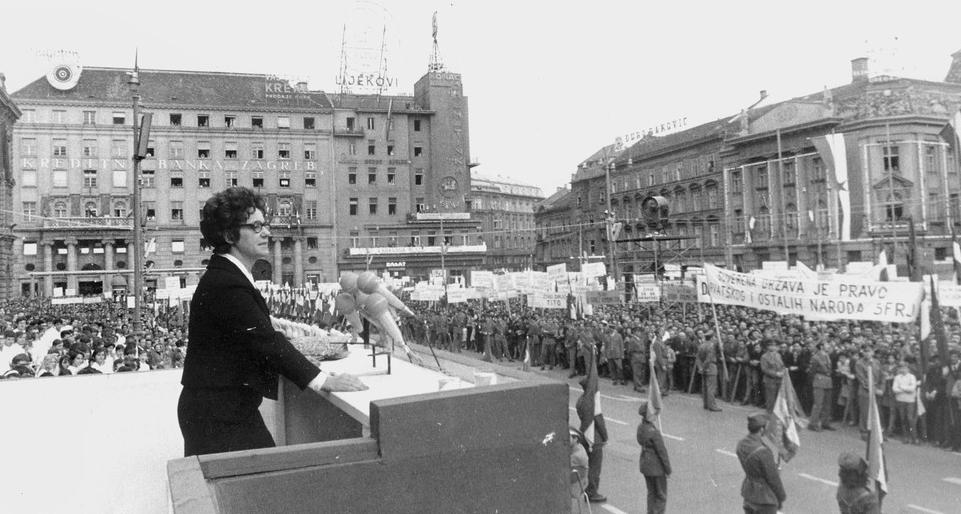 Savka Dabčević-Kučar, a graduate of the Faculty of Economics of the University of Zagreb. Born on Korčula, she became an anti-fascist in World War II, joining the partisans after her brother was beaten by fascists. After graduating, she continued to study at the faculty and became one of the first doctors of economics in Croatia, raising eyebrows by choosing to write her doctorate dissertation about a non-Marxist economic theorist (Englishman John Maynard Keynes). She became a professor at the faculty in the 1950s and despite her great advances in political life, remained a committed teacher at the faculty until 1971. In 1967, she was elected President of the Socialist Republic of Croatia. In 1969, she moved to an even more important position - that of president of the Central Committee of the League of Communists of Croatia. She was the first woman in Europe to be appointed head of government of a political entity and the first female in Croatia to hold an office equivalent to a head of government. In this picture, she addressed supporters on Ban Jelacic Square Zagreb during the movement called the Croatian Spring, which called for greater autonomy for Croatia. At the address, thousands cheered her as “Savka, queen of the Croats”. For her pivotal role in the movement, she was removed from her positions and public life and retired. She returned to politics in 1990 upon the collapse of communism in Europe and during the Croatian war of independence was one of the few politicians who visited the front lines of battle in Slavonia, Petrinja, Pokupski and the Dalmatian hinterland
Savka Dabčević-Kučar, a graduate of the Faculty of Economics of the University of Zagreb. Born on Korčula, she became an anti-fascist in World War II, joining the partisans after her brother was beaten by fascists. After graduating, she continued to study at the faculty and became one of the first doctors of economics in Croatia, raising eyebrows by choosing to write her doctorate dissertation about a non-Marxist economic theorist (Englishman John Maynard Keynes). She became a professor at the faculty in the 1950s and despite her great advances in political life, remained a committed teacher at the faculty until 1971. In 1967, she was elected President of the Socialist Republic of Croatia. In 1969, she moved to an even more important position - that of president of the Central Committee of the League of Communists of Croatia. She was the first woman in Europe to be appointed head of government of a political entity and the first female in Croatia to hold an office equivalent to a head of government. In this picture, she addressed supporters on Ban Jelacic Square Zagreb during the movement called the Croatian Spring, which called for greater autonomy for Croatia. At the address, thousands cheered her as “Savka, queen of the Croats”. For her pivotal role in the movement, she was removed from her positions and public life and retired. She returned to politics in 1990 upon the collapse of communism in Europe and during the Croatian war of independence was one of the few politicians who visited the front lines of battle in Slavonia, Petrinja, Pokupski and the Dalmatian hinterland
The Faculty of Economics University of Zagreb is the largest faculty in the country. Over its 100 year history, it has established itself as an internationally respected institution. Today, it has around 9000 persons enrolled, caters for international students with some courses in English and has produced over 86, 000 graduates, including 856 doctors of science. In its infancy, students of the College of Trade and Transport were taught at the Technical College, which is today the Museum of Arts and Crafts in Zagreb © National and University Library in Zagreb
In its infancy, students of the College of Trade and Transport were taught at the Technical College, which is today the Museum of Arts and Crafts in Zagreb © National and University Library in Zagreb
The history of the Faculty of Economics University of Zagreb starts with the opening in 1920 of its forerunner, the Zagreb College of Trade and Transport. Its purpose was to educate in the areas of banking, domestic and international trade, transport, consular services, insurance and the education of teachers. Its courses lasted three years and it proved so popular that in the academic year 1923/24, some 1,125 students were enrolled.
The institution held college status until 1925 when Stjepan Radić became the Minister of Education. It must have been unusual for Radić to find himself as part of the government of the Kingdom of Serbs, Croats and Slovenes, the state which preceded the Kingdom of Yugoslavia. Today, Radić is best remembered as a politician outspoken in his advocacy of autonomy for Croatia. Before his appointment to the government, he had always done so in opposition. Indeed, he had been imprisoned several times for his views, which were proclaimed loudly in his writings or in person (he was a gifted public speaker). As recently as March 1925 he had been in prison but, when the political party of which he was a member officially recognised the monarchy and the state constitution, he was freed. In a remarkable turnaround, before the year's end, he was a minister in the government.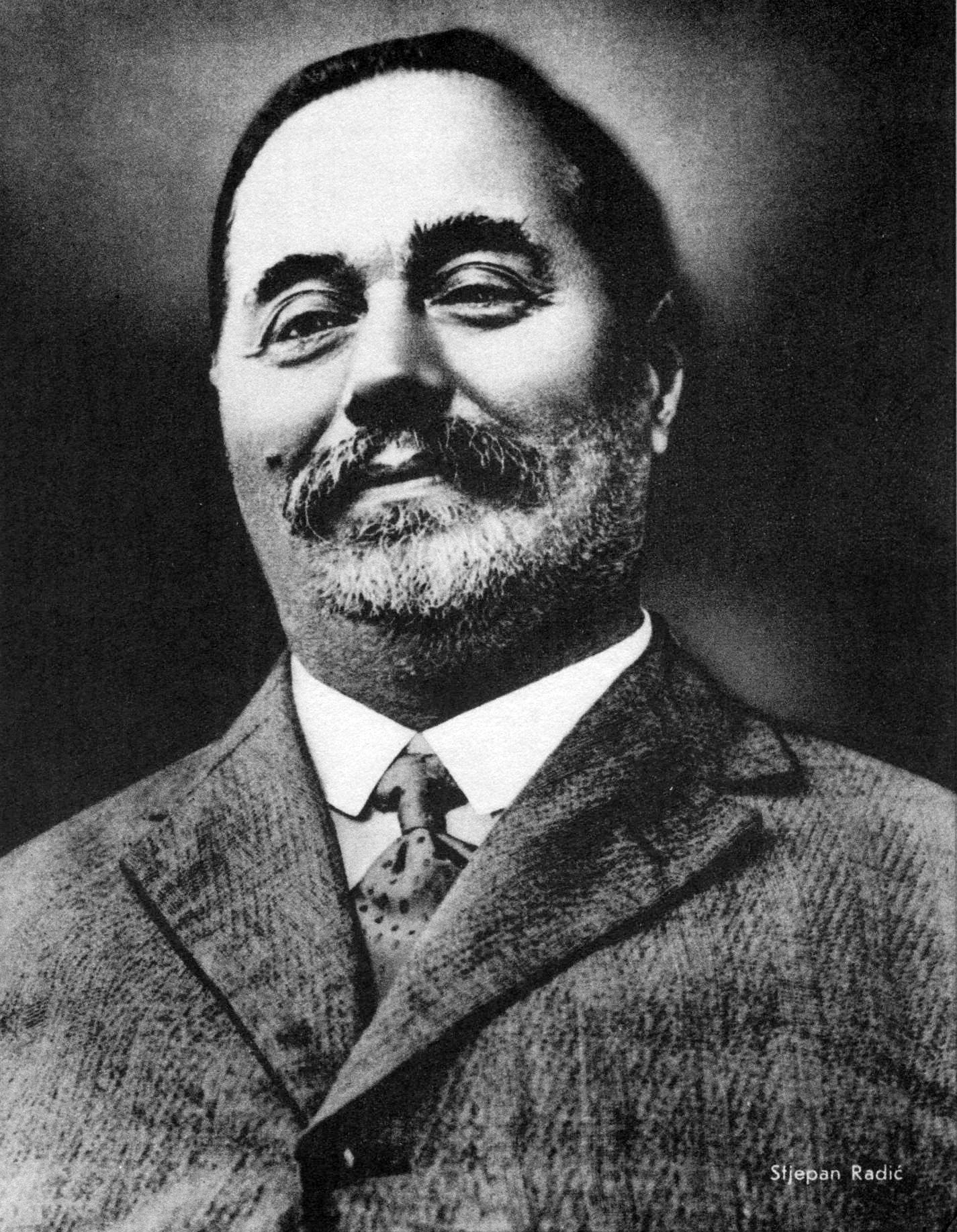 Stjepan Radić, pictured in the 1920s © public domain. In 1895 Radić was sent to prison for the public burning of the Hungarian flag in Zagreb – alongside Antun Dabčević, the father of Savka Dabčević-Kučar.
Stjepan Radić, pictured in the 1920s © public domain. In 1895 Radić was sent to prison for the public burning of the Hungarian flag in Zagreb – alongside Antun Dabčević, the father of Savka Dabčević-Kučar.
Stjepan Radić's desire for Croatian autonomy was not born from the ideals of the political class of Zagreb. The ninth of eleven children, born to a peasant family in a small village on the banks of the Sava river, just north of Sisak, Radić was very much a representative of the people whence he came. To him (and others in his family – his brother and nephew also being prominent politicians), education had the most important role to play in emancipation. He had lived in poverty in order to complete his own - after being banned from university-level educational institutions throughout the whole of the Austro-Hungarian empire for his protests against the state, he travelled penniless to Russia, France and Switzerland to complete his studies. In the latter, finance was one of his chosen subjects.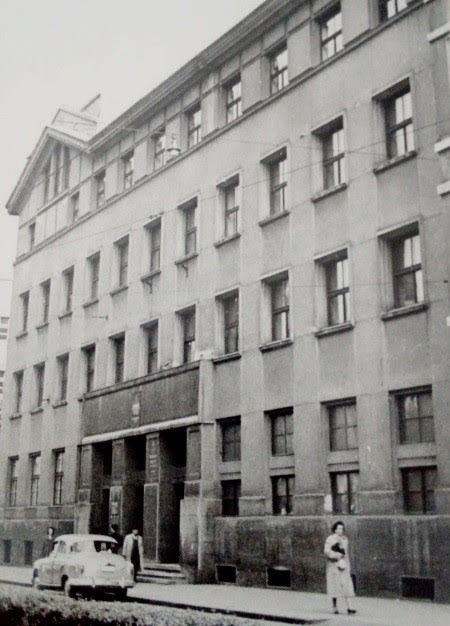 The first dedicated building of the Higher School of Economics and Commerce was located on the corner of Bauerova and Zvonirmirova © Faculty of Economics University of Zagreb
The first dedicated building of the Higher School of Economics and Commerce was located on the corner of Bauerova and Zvonirmirova © Faculty of Economics University of Zagreb
Under Radić's spell in office, the Zagreb College of Trade and Transport became the Higher School of Economics and Commerce. Its courses extended to four years, it attained university status. With no building designated to the increasingly popular institution, students had sometimes been taught at the Technical College (today's Museum of Arts and Crafts) and in parts of what is now the Mimara Museum. A dedicated home for the faculty was authorised and its construction started in 1927. Classes began at the faculty, located on the corner of Bauerova and Zvonimirova, in 1928, but within the decade the institution had outgrown its home and a plot of land in Svetice was acquired in order to build a new, larger facility. Its construction was interrupted by the Second World War and students would end up being taught on the Bauerova and Zvonimirova site all the way up to 1952.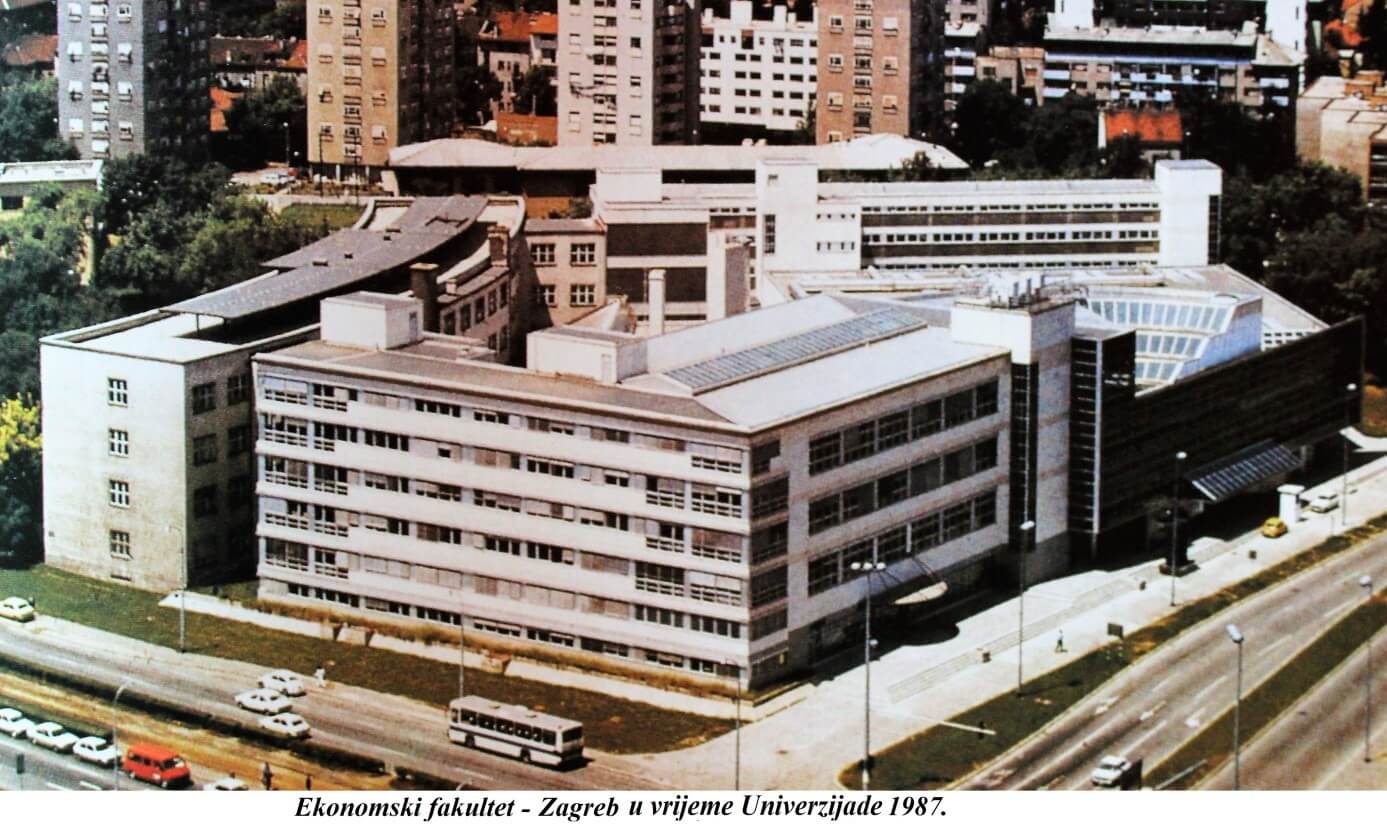 The faculty's modern building, pictured in 1987. Today, the faculty has 17 departments - Finance, Demography, Economic Theory, Business Economics, Informatics, Macroeconomics and Economic Development, Marketing, Mathematics, International Economics, Business in Foreign Languages, Organization and Management, Law, Accounting, Statistics, Trade and International Business, Tourism, Physical Education and Health © Faculty of Economics University of Zagreb
The faculty's modern building, pictured in 1987. Today, the faculty has 17 departments - Finance, Demography, Economic Theory, Business Economics, Informatics, Macroeconomics and Economic Development, Marketing, Mathematics, International Economics, Business in Foreign Languages, Organization and Management, Law, Accounting, Statistics, Trade and International Business, Tourism, Physical Education and Health © Faculty of Economics University of Zagreb
In 1947, the Higher School of Economics and Commerce became the Faculty of Economics University of Zagreb. In 1952, the faculty officially moved to the new site in Svetice. In 1968 it expanded once more when it merged with the 12-year-old College of Economics. Since then, the building at Svetice has received major upgrades and further facilities of the faculty can now also be found at the university campus in Borongaj, in Varaždin, in Koprivnica and in Bjelovar. After a century of existence, the Faculty of Economics University of Zagreb's longstanding difficulties to meet the popularity of its courses with the space available are now over. Not only can they accommodate every Croatian economy student who makes the grade, but they are also able to offer places to some of the best international students. It would surely come as no surprise if they are still educating the future elites of business, banking, finance and politics in another 100 years.
The Faculty of Economics University of Zagreb site in Svetice, as seen from its garden © Wolf - Pidgeon
Enormous Investment: Boeing and Airbus Parts to be Produced Near Zagreb
More than excellent news for the Croatian job market and the domestic economy as a whole as as many as 600 jobs are set to be opened in Zagreb County thanks to a huge investment.
As Poslovni Dnevnik writes on the 29th of May, 2019, parts for the aviation giants Boeing and Airbus will be produced in the Republic of Croatia. The parts will be incorporated into the world's most famous aircraft and their engines, including names like Airbus, Boeing, Bombardier, and Rolls-Royce. The news was announced on Wednesday by Večernji list, citing that the Austrian aeronautical company FACC is beginning to construct a production plant for the interior parts of planes in the business zone of Jakovlje in Zagreb County, close to the Croatian capital of Zagreb.
The investment is worth a massive 33 million euros and will open up 600 jobs. The land has already been purchased, the necessary permissions and the permit have been granted and the construction has begun. The plant should be completed by the end of 2020 and production at the plant will commence in 2021.
This great news has also been confirmed by the head of the aforementioned Austrian company Robert Machtlinger, who stated that FACC wants to grow and be quicker than the market and intends to work on strengthening the expertise of its employees. "Zagreb is offering us this because it has a highly qualified workforce," he added.
The company chose between different locations in Central and Eastern Europe and ultimately decided on Zagreb. The sale contract has already been signed, and the Austrian company has become the owner of the land in the Jakovlje business area, totalling 130 thousand square metres.
Vecernji list also revealed that a meeting will take place on Wednesday in Banski Dvori where the President of FACC AGI's management board and the president of AVIC Cabin Systems Co. Limited from China, a company which owns 55.5 percent of the Austrian company, will talk to Croatian Prime Minister Andrej Plenković, Economy Minister Darko Horvat and State Secretary Zdenk Lucić about the project implementation and everything that goes into the planning and licensing phase.
The plan is that construction work on the plant will be completed by December 2020, and production will begin no later than April 2021, according to Dnevnik.
As a daughter company of the Chinese state-owned company Aviation Industry Corporation of China, one of the ten largest Chinese companies, FACC, based in Austria, is part of the global market and cooperates with world leaders in the aviation industry such as Airbus, Boeing, Bombardier, Rolls-Royce. FACC is otherwise a company with more than 3,400 employees from 38 countries which work in thirteen locations worldwide, Vecernji list writes.
They added that un the financial year 2018/2019, they earned 781.6 million euros in revenue, an increase of 4.5 percent compared to the previous financial year, and also the best result in the company's thirty-year history.
Make sure to follow our dedicated business page for much more.
American Ambassador and Students Visit Successful Croatian Company
As Novac writes on the 25th of May, 2019, the headquarters of the Zagreb-based Q IT company were visited by US Ambassador W. Robert Kohorst, where the representatives of the Croatian company Q and the US Ambassador discussed their US business operations, projects and further plans.
Ambassador Kohorst, who comes from the business world, was particularly interested in Croatian Q's business strategy on the American market and what challenges they encountered. The conversation was also conducted in the spirit of bilateral relations between the United States of America and Croatia, with the aim that the US embassy could further assist Croatian companies with their operations in the United States, but also American investors here in Croatia.
''We're glad that we had the opportunity to host US Ambassador Kohorst and to Q and the projects we've worked for the US market to him. The exchange of knowledge and experience is crucial because those who can influence laws must first hear what's going on out in the field. That's why we were delighted to be able to share our experience with the ambassador,'' stated Filip Ljubic, CEO of Q.
In addition to the American Ambassador, Q was visited by three groups of American students from the Quinnipiac, Michigan and Redlands universities this year. For a total of 110 students who visited, the story of Q's success was their main interest, since Q grew by a staggering 4,000 percent in the last four years alone, and several of them expressed their personal desires to work in this Croatian company.
Across the Atlantic over in the United States, this Croatian company operates through its Los Angeles and New York offices, and they have so far successfully completed projects for leading American companies such as Coca-Cola, Facebook, Walmart, and the United States Postal Services.
In addition, last year in the United States, they were rewarded for the excellence of their brand, receiving the REBRAND 100® award alongside the likes of American HP and Cadillac.
Make sure to follow our dedicated Made in Croatia and business pages for much more.


